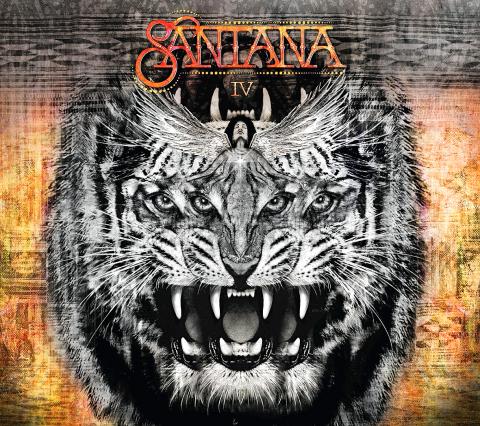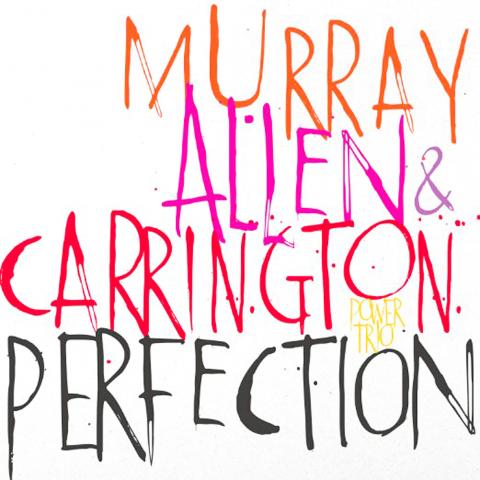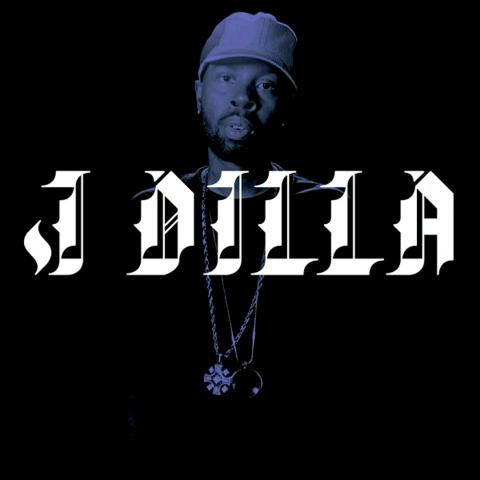Santana IV, Santana, Santana IV/Thirty Tigers
Clutching at hits didn’t suit guitarist Carlos Santana, even when he got them. On albums featuring one guest singer after another, with production geared toward airplay and credits filled with collaborators and song doctors, his guitar started to sound cornered — so much so that he allowed himself an almost entirely instrumental album, Shape Shifter, in 2012, before making a Spanish-language album full of guests, Corazon, in 2014. He finds another promising comfort zone, with songs this time, on Santana IV.
The title treats Santana IV as a sequel to Santana III, released in 1971, the last album, until now, that Santana made with the band members who played at the 1969 Woodstock Festival. Santana has reunited with Gregg Rolie on keyboards and lead vocals, Michael Shrieve on drums and Michael Carabello on congas, along with Neal Schon, who joined for Santana III before going on to start Journey, and with two more recent band members — Karl Perazzo on timbales and Benny Rietveld on bass. Throughout the album, they sound like a band, not a collection of overdubs.

It’s an aggressive band, with the seething chords of Rolie’s Hammond organ, Schon’s hard-rock guitar tone and the band’s precise stereo salvos of percussion: rumba, son, funk, carnival beats and conga-laced blues. Santana and Schon have a full-tilt guitar battle in a fast Latin jam, Echizo, and go exploring in tandem on the more meditative Fillmore East.
There are throwbacks to late-1960s Santana in Rolie’s blustery lead vocals and heavy-breathing come-ons: “Come over here girl, sit on my lap,” he leers in Anywhere You Want To Go, which strains too hard to be a follow-up to Oye Como Va. (Ronald Isley, a guest on two songs, is far more suave as he delivers the benevolent thoughts of Love Makes the World Go Round and Freedom in Your Mind.) But the band’s not sealed in any time capsule; Choo Choo makes the most of a house beat before the band carries the rhythm back to its Latin roots.
The album has a few missteps, like the goopy arrangement on the ballad Suenos and some hokey lyrics. But what comes through nearly every song is a sense of camaraderie and joyful relief: no more kowtowing to radio and countless ways to jam.

— JON PARELES, NY TIMES NEWS SERVICE
Perfection, Murray, Allen & Carrington Power Trio, Motema
The longest track on Perfection, the debut album by a jazz trio with David Murray on tenor saxophone and bass clarinet, Geri Allen on piano and Terri Lyne Carrington on drums, clocks in at just over 8 minutes, covering so much ground that it feels almost like an epic. Composed by Murray, it’s a swinging tune with a pensive yet intrepid melody, and a midsection of bristling abstraction. The title is playfully apt: The David, Geri & Terri Show.

Dynamic combustion is the core characteristic of this all-star trio, which first convened at last year’s NYC Winter Jazzfest. Murray, 61, is an improviser of great, garrulous bluster, while Allen and Carrington, both in their 50s, have forged prominent careers more in line with the postbop mainstream.
Perfection was recorded one week after the death of Ornette Coleman, whose trailblazing music and spirit influenced each member of the group. The title track is a previously unissued piece of Coleman’s, in a manner of speaking: It’s a scrappy tune transcribed from his alto saxophone playing.
For its official premiere, the track has reinforcements: Along with the trio, it features bassist Charnett Moffett (a Coleman alumnus), trombonist Craig Harris (a Murray confrere) and trumpeter Wallace Roney Jr (Allen’s son). Across the board, the performances are thrilling and taut, more celebration than elegy.

The same is true of the album’s other nods of tribute: a flowing elaboration on Barbara Allen, the traditional folk song, linked to the memory of bassist Charlie Haden; The Nurturer, a soul ballad dedicated to trumpeter and mentor Marcus Belgrave; and For Fr Peter O’Brien, a springy invention inspired by a Jesuit priest who managed pianist and composer Mary Lou Williams. Allen composed or arranged each of these, and the trio gives them a vital lift.
Elsewhere — on Geri-Rigged, by Carrington, for instance — the trio works with a firmly articulated rhythmic premise that gradually gives way to an expressionistic scrawl. The tension between form and freedom is obvious but never overstated, and the rapport within the trio is exceptionally strong. Murray, Allen and Carrington have cause, anyway, to consider a collective future beyond their current tour, which will bring them to Birdland in New York from May 17 to May 21.
— NATE CHINEN, NY TIMES NEWS SERVICE
The Diary, J Dilla, PayJay/Mass Appeal
In the late 1990s and early 2000s, hip-hop producer J Dilla became something of a mystic, an oracle of warm, enveloping hip-hop and soul. He was a producer of earthy hits by Common and the Pharcyde, among others, and an extended producing partner of A Tribe Called Quest. But what J Dilla (Dilla for short) was truly revered for was integrity and vibration — a Dilla beat floated in almost ineffable ways.
So it was unusual when he signed with MCA, a major label, and even more unusual when he decided one of his albums would be of him rapping over other people’s beats. He was a rapper, too — a member of Slum Village — but not best known for that. As often happens with stubborn visionaries and major labels, the two played to a stalemate: Dilla was dropped, his album shelved.
The Diary is the most ambitious project of Dilla’s work since his death in 2006. It is in part a reissue of those lost tapes, cleaned up, but also an act of historical imagination — these are “the songs that we assume he would have placed on this album,” writes Eothen Alapatt, creative steward of Dilla’s estate, in the liner notes, emphasizing that Dilla wished for this music to be released. (A handful of the guest vocals were recorded recently; it’s jarring to hear Snoop Dogg rap “I met Obama in some Snoop Dogg house shoes” on an album of songs that date primarily to 2001 to 2003.)
This release doesn’t deeply complicate Dilla’s legacy — several of the songs have already been released as singles, and versions of the album have been widely bootlegged among cognoscenti. The Diary is an album with historical weight if not aesthetic import. Dilla the rapper is far more deliberate than Dilla the producer, rhythmically and topically (and for what it’s worth, this isn’t his best rapping).
That he wanted to collaborate with some of the best producers of his era like Bink!, Hi-Tek and Supa Dave West — his competition, essentially — is this album’s most striking feature. It shows that, even though Dilla often seemed as if he were making his own version of hip-hop, he wasn’t hermetically sealed off from the rest of the genre: There are musical and lyrical nods here to R Kelly, Jay Z, Big Punisher and more. For better and worse, The Diary is strikingly of its time. Perhaps Dilla wanted to prove a point about where in hip-hop he belonged, or perhaps he just wanted to play.
— JON CARAMANICA, NY TIMES NEWS SERVICE
Crab Day, Cate Le Bon, Drag City
The singer-songwriter Cate Le Bon, who grew up on a farm in western Wales and now lives in Los Angeles, is a practical eccentric. She begins her fourth album with the line “It doesn’t pay to sing your songs,” and she may be right. But she sings one, anyway, marking a place on an imaginary calendar, when perhaps it does pay for people to be kind to one another. “Swim across to greet me on Crab Day,” she sings. “Spend a lovely dream on Crab Day / lend your voice to me on Crab Day / who am I to judge you on Crab Day?”
Le Bon’s music, on this charming and sometimes startling record, traces back to a few 1960s pop outliers who wrote strange and vulnerable and image-rich songs — Syd Barrett in particular — and beyond that to an early-’80s post-punk disposition, a spirit of anti-virtuosity, anti-grandiosity, and of figuring it out as you go along. In truth, she’s already figured out a lot.
Her band has a settled rhythm section and fizzy arrangements, involving two guitars and concise, stepwise streaks of marimba and baritone saxophone. But it’s certainly not rock-star music: These songs are spindly and staccato and lightly played, with no reverb, built of jagged instrumental melodies that sound like they begin in the middle, with few spaces for musicians to step out and shine. Over the top of it all, Le Bon sings in long tones, calmly drawing them out.
Still, there is something at stake. She is looking directly at you. She wants you to understand. (“I want to make sense with you,” she sings in I’m a Dirty Attic.) Crab Day begins with the same four chords repeated through 20 bars of music, with growing tendrils of accompaniment so that you don’t go crazy. This is her first test: Are you with me?
In the second to last track, How Do You Know?, a sweet song — something like a ballad — the music changes course into another extravagant repetition: a short phrase played 22 times, across 22 bars. This is your final exam before the last class. The last class is What’s Not Mine, a calmly hypnotic seven-and-a-half minute song that puts all her strengths in one place and ends with, of all things, a surprise long-form guitar solo by Le Bon, which tails off in a sputter.
— BEN RATLIFF, NY TIMES NEWS SERVICE

June 2 to June 8 Taiwan’s woodcutters believe that if they see even one speck of red in their cooked rice, no matter how small, an accident is going to happen. Peng Chin-tian (彭錦田) swears that this has proven to be true at every stop during his decades-long career in the logging industry. Along with mining, timber harvesting was once considered the most dangerous profession in Taiwan. Not only were mishaps common during all stages of processing, it was difficult to transport the injured to get medical treatment. Many died during the arduous journey. Peng recounts some of his accidents in

“Why does Taiwan identity decline?”a group of researchers lead by University of Nevada political scientist Austin Wang (王宏恩) asked in a recent paper. After all, it is not difficult to explain the rise in Taiwanese identity after the early 1990s. But no model predicted its decline during the 2016-2018 period, they say. After testing various alternative explanations, Wang et al argue that the fall-off in Taiwanese identity during that period is related to voter hedging based on the performance of the Democratic Progressive Party (DPP). Since the DPP is perceived as the guardian of Taiwan identity, when it performs well,

A short walk beneath the dense Amazon canopy, the forest abruptly opens up. Fallen logs are rotting, the trees grow sparser and the temperature rises in places sunlight hits the ground. This is what 24 years of severe drought looks like in the world’s largest rainforest. But this patch of degraded forest, about the size of a soccer field, is a scientific experiment. Launched in 2000 by Brazilian and British scientists, Esecaflor — short for “Forest Drought Study Project” in Portuguese — set out to simulate a future in which the changing climate could deplete the Amazon of rainfall. It is

Artifacts found at archeological sites in France and Spain along the Bay of Biscay shoreline show that humans have been crafting tools from whale bones since more than 20,000 years ago, illustrating anew the resourcefulness of prehistoric people. The tools, primarily hunting implements such as projectile points, were fashioned from the bones of at least five species of large whales, the researchers said. Bones from sperm whales were the most abundant, followed by fin whales, gray whales, right or bowhead whales — two species indistinguishable with the analytical method used in the study — and blue whales. With seafaring capabilities by humans